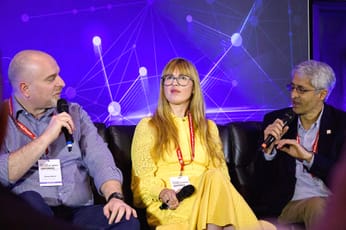
Covid-19, schools, and the dangers of unintentional misinformation
Not all misinformation is intentional. Sometimes the angle we take on a story, and the headline we use, can leave completely the wrong impression in a reader's mind.
Journalists might do well to learn from the medical profession during this pandemic: “first, do no harm”. We live in a world that is now defined by a still ill-understood viral threat. The lack of clear, definite information is hard for many people to deal with, especially with lives at stake. And that leads to emotional reactions, panic and irrationality.
It’s beholden on us to try to calmly explain and contextualize information as it emerges, and that means being alive to the potential misreadings of a story. Let me give you an example from the Telegraph website published late last night.
It concerns one issue that triggers an emotional reaction in people above most others: schools and their children. That reaction is completely understandable — and it's why we need to be so careful in our reporting around it.
School’s out for the summer…and more?
The return of children to schools in the UK (and elsewhere) is a vexed issue for multiple reasons. It’s clearly critical that they go back as soon as possible for both educational reasons, because we know how school absence impacts on long term academic achievement. That's why the UN is calling for schools to be reopened as soon as possible.
It also matters hugely for economic reasons.
I’ve been working only half the hours I normally work during the period while schools have been shut, as has my wife. That’s sustainable for now, but not for ever. Like many, I'm hoping for a full return to school in September. And I'm more than happy to listen to my molecular biologist wife when she reassures me that it's as safe for our children as it reasonably can be. Not believing her would be mansplaining on a divorce-level scale, I suspect.
The science appears to show, currently, that children are unlikely to catch Covid-19, and extremely unlikely to die from it, and don’t seem to be implicated in spreader events, despite carrying a normal viral load. But we must remember that these bits of information are provisional, as is much of the science around the novel coronavirus.
So, it’s rather worrisome when you read headlines from a newspaper like this:
Reopening schools without better test and trace 'threatens second wave twice as big as first'
My assumption, given that the report is based on a paper in The Lancet, that new evidence has emerged about the role of school children in spreading the virus. My heart sank. But I read on.
Evidence-based medicine reporting
To my surprise, there was precious little about schools at all in the opening pars. In fact, it’s all about the inadequacies of the government’s track and trace scheme. We need to wait until paragraph five to get a substantive link to schools:
Without improvements to [track and trace], the opening of schools and associated changes such as the return of parents to work could result in a second wave […] this winter that is two to 2.3 times the size of the first, they said.
But the rest is all based on modelling, not new research. So — why is opening schools such a problem in particular? Keep on reading to the 11th paragraph and you find out:
Researchers stressed that the modelling, published in The Lancet Child and Adolescent Health, was based on a number of assumptions including the return of around 70 per cent of workers to the workplace when schools are back.
Interesting. And what does that mean for the impact of their model?
Much of the increase in infections modelled was associated with these changes rather than transmission of the virus within schools, they said.
Oh.
Work spreaders
So, we have to wait until the 12th paragraph to discover that the actual issue is that they are assuming that children returning to school will free vastly more parents up to return to their workplaces. It's the second order consequences at work here, not the actual return of children to school.
That's a massive difference. And we're waiting awfully long time in the article to discover that.
So, the actual reason for their modelling prediction is that wholesale return to work without track and trace working very well will lead to a surge in infections. But, given that few people will make it to the 12th par to discover that, the article is at risk of spreading unintentional misinformation: that schools themselves are likely to be central sources of viral spread.
A close reading of the article does not support that interpretation. In no respect could the story be said to be wrong. But because they’ve chosen to run with the schools angle, it runs the serious risk of inflaming an already heated an emotional debate about the opening of schools in the pandemic, because the headline — while justified — is open to easy misinterpretation.
And that’s not useful in communicating to the public in a pandemic.
The Times has also covered the very same story - but has managed to frame it in a more straightforward manner:
Ministers insisted today that the government’s track and trace programme is “delivering” despite warnings by scientists that it is still not good enough to prevent a second wave of coronavirus when schools reopen.
Modelling by academics at the University of London found that 75 per cent of symptomatic Covid-19 cases would need to be caught by the programme and 70 per cent of their contacts followed up if the government is to keep the virus in check.
Less eye-catching, sure. It's also much clearer about the exact predictions of the modelling. That's what we need.
Sign up for e-mail updates
Join the newsletter to receive the latest posts in your inbox.










